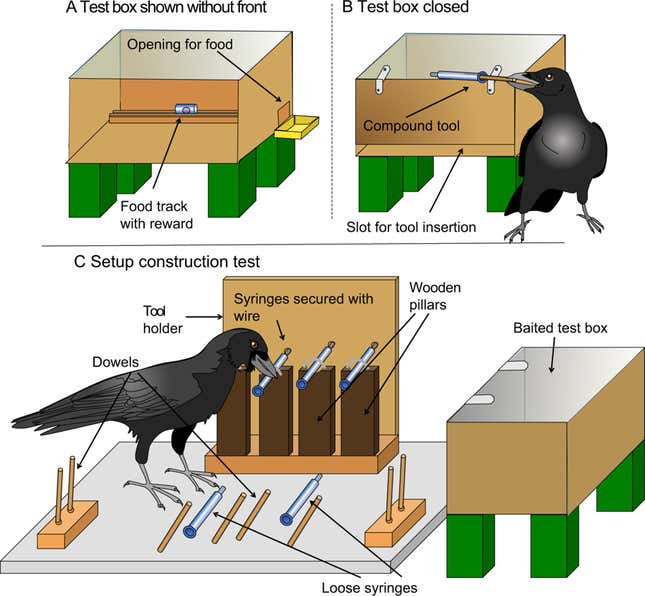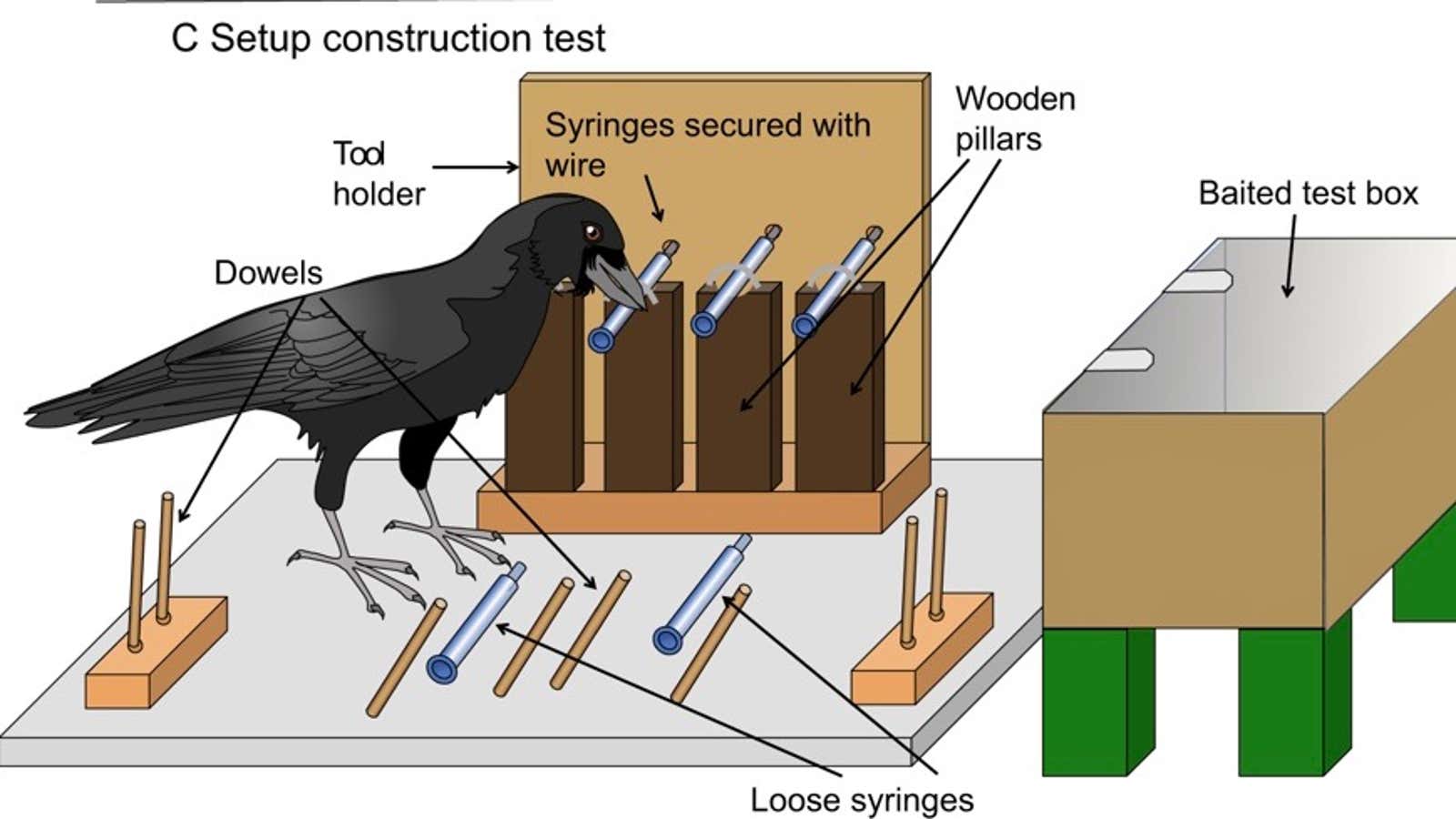We already know crows are clever enough to construct tools from memory and can be trained to pick up trash. However, a new study shows that they’re more skilled than scientists previously imagined.
These resourceful birds, it turns out, can also innovate, making compound tools out of parts, a skill previously only demonstrated in a few captive great apes and in humans. “Their compound tool construction constitutes a new example of their ability to generate solutions to novel challenges, and corroborates that their abilities are highly flexible and subject to individual variation,” according to an international research team writing in the journal Scientific Reports.
Putting the birds to the test
To test crows’ ability to innovate, researchers set up a series of exercises with eight birds in a lab. The scientists gave eight New Caledonian crows a number of combinable elements that each were too short to retrieve food targets in a box. Four spontaneously responded by combining two too-short parts to make a longer stick that enabled them to reach the food. Each of these four birds only had to try two combinations before succeeding in achieving the goal. And the four birds who aimed short rods at the food were disqualified from the trial for having failed the first cleverness test.

Next, the four remaining birds were tested with food even further out of reach. In this setup, on nearly 80% of tries, the crows didn’t even bother to attempt to get at the food before combining parts to make a tool.
In this experiment, however, a two-part tool would not suffice. And only one especially clever crow named Mango innovated complex three- and four-part tools to get what he wanted. This proves, as has been noted previously, that some crows are smarter or more creative than others, just like some humans. Still, Mango wasn’t consistent—or as the researchers put it, he had “fluctuating motivation,” which also sounds a lot like people.
Tool-making is associated with human evolution and indicates an ability to plan. Children are only able to start making tools at around age 5 because this skill involves complex cognitive function and emerges after “extensive individual and social learning,” the researchers explain. Innovating new tools is even more difficult. To see this behavior displayed in crows indicates a level of cognition that’s quite impressive and hadn’t been tested before.
What does a crow really know?
What’s not clear from this experiment is the extent to which crows had “insights” as to what would work or whether they accidentally alighted on the compound tool solution. If the four birds that created compound tools just used a “trial and error” method, eventually finding a way to get the food in the experimental box, that’s smart but not indicative of extremely evolved cognitive processes.
If the birds had actual realizations that led to their innovations, as the researcher believe they did, that means crows possess “higher” cognitive processes. Such a finding would be in line with other recent comparative cognition research that shows different animal species can solve novel problems, and don’t just rely on reinforcement learning, according to the study.
Still, figuring out just how to test crow insight in a lab or in the wild is a challenge that, at this point, human researchers haven’t solved. They’ll need to use their higher cognitive processes and hope for an insight to devise the next crow cognition experiment.
